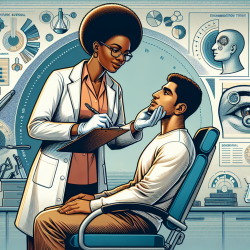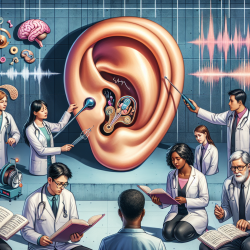The field of speech-language pathology continuously evolves, with research guiding best practices. One significant area of focus is the myofunctional orofacial examination (MOE), crucial for assessing the stomatognathic system and diagnosing orofacial myofunctional disorders. A recent literature review by Kilinc and Mansiz (2023) provides invaluable insights into the most effective MOE tests.
Understanding Myofunctional Orofacial Examination
MOE is a comprehensive assessment tool used by speech-language pathologists, dentists, and orthodontists to evaluate the orofacial region. It involves a detailed examination of orofacial muscles, lips, tongue, breathing, swallowing patterns, cranio-oro-facial posture, and speech. The goal is to detect any dysfunctions and develop individualized treatment plans.
Key Findings from the Literature Review
The literature review analyzed 56 studies to determine the most preferred MOE test. The findings revealed that the "Orofacial Examination Test With Scores" (OMES) is the most widely used method across various medical disciplines, including ENT and cardiology. This test provides a structured approach to evaluate orofacial functions and is preferred for its reliability and consistency.
Why OMES Stands Out
The OMES protocol scores each assessment to define the severity of detected orofacial dysfunctions. This scoring system ensures that the evaluations are consistent and reliable across different conditions. The review highlighted that OMES is effective in various clinical settings, including language-speech pathology, dental, ENT, and pediatric clinics, demonstrating its interdisciplinary utility.
Practical Implications for Practitioners
Practitioners can enhance their MOE skills by integrating the OMES protocol into their assessments. Here are some practical steps to consider:
- Training and Familiarization: Ensure that all team members are trained in the OMES protocol to maintain consistency in assessments.
- Standardized Assessments: Use the OMES protocol to standardize evaluations, which helps in comparing results over time and across different practitioners.
- Data-Driven Decisions: Utilize the scoring system to make data-driven decisions for individualized treatment plans.
- Interdisciplinary Collaboration: Collaborate with other professionals, such as dentists and orthodontists, to provide comprehensive care.
Encouraging Further Research
While the OMES protocol is highly effective, continuous research is essential to refine assessment methods and develop new tools. Practitioners are encouraged to stay updated with the latest research and contribute to studies that can further enhance the field of myofunctional orofacial examination.
To read the original research paper, please follow this link: Myofunctional orofacial examination tests: a literature review.










